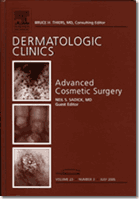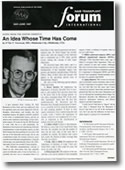Q: I had a hair transplant of over 600 grafts using Follicular Unit Extraction (FUE) to my frontal hairline and the frontal part of my scalp. The procedure was done less than a year ago by another doctor. Since then I have had persistent pimples and redness in the area that the grafts were placed. Also, the surface of the skin in the area is irregular. — E.Z., Long Island, N.Y.
A: One of the causes of having pimples and redness following Follicular Unit Extraction may be buried hair fragments and there are significantly more hair fragments generated with the two-step FUE technique than with the three-step method.
In the three-step procedure, we use blunt dissection which minimizes transection (cutting of hair follicles) and thus reduces the incidence of hair fragments. See the Three-Step FUE page at the Bernstein Medical – Center for Hair Restoration website.
In our practice, we also place every extracted graft under the microscope. This serves a number of purposes:
- It gives me immediate feedback on transection rates, so that I can adjust my technique in real-time (using a stereo-microscope is much better than visual inspection for this purpose)
- It enables us to trim away excess tissue and hair fragments (we use the same judgment as we do with strip harvesting, so that a “viable looking” fragment would be left attached
- It allows us to accurately count the number of hairs in each follicular unit graft, as it is particularly important to have pure 1-hair grafts for the frontal hairline. This also allows us to better anticipate the end cosmetic result.
- It allows us to dissect larger follicular units into smaller ones for specific cosmetic purposes, i.e. eyebrows, hairlines, temples etc.
One of the ironies of FUE is that it is more efficient to extract the larger FUEs, since this gives us a greater hairs/hole ratio, but this often leaves us with an inadequate number of 1-hair units, which must be obtained though traditional stereo-microscopic dissection of the larger extracted grafts.
Other causes of folliculitis (manifested by pimples and redness) can result from placing the grafts too deep in the recipient site (where they may get buried) and secondary infection. A mild, transient folliculitis is often seen after a hair transplant without any precipitation factors.
Posted by Robert M. Bernstein M.D. 

 “Dermatologic Clinics” is a quarterly review with comprehensive, state-of-the-art information by experts in the field of dermatology. The industries most highly knowledgeable medical professionals provide current, practical information on the diagnosis and treatment of conditions affecting the skin. Each issue of Dermatologic Clinics focuses on a single topic. The July 2005 issue, entitled “Advanced Cosmetic Surgery”, published an article authored by Robert M. Bernstein M.D, and co-authored by William R. Rassman M.D. entitled “
“Dermatologic Clinics” is a quarterly review with comprehensive, state-of-the-art information by experts in the field of dermatology. The industries most highly knowledgeable medical professionals provide current, practical information on the diagnosis and treatment of conditions affecting the skin. Each issue of Dermatologic Clinics focuses on a single topic. The July 2005 issue, entitled “Advanced Cosmetic Surgery”, published an article authored by Robert M. Bernstein M.D, and co-authored by William R. Rassman M.D. entitled “ The following is a portion of “An Idea Whose Time Has Come,” an editorial written by O’Tar T. Norwood, MD — founder of the Norwood Classification System for Hair Loss — and published in the May/June 1997 issue of “Hair Transplant Forum International”:
The following is a portion of “An Idea Whose Time Has Come,” an editorial written by O’Tar T. Norwood, MD — founder of the Norwood Classification System for Hair Loss — and published in the May/June 1997 issue of “Hair Transplant Forum International”:


